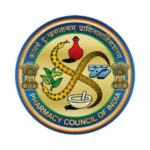Neurological disorders represent a broad spectrum of conditions affecting the brain, spinal cord, and nerves, encompassing a diverse range of symptoms and complexities. Conditions such as epilepsy, Parkinson’s disease, multiple sclerosis (MS), Alzheimer’s disease, and migraine headaches are just a few examples of the challenges faced by individuals and healthcare providers in managing neurological health. Among the healthcare professionals involved in the management and care of patients with neurological disorders, pharmacists play a crucial and multifaceted role. Their expertise in medications, patient education, and collaborative care makes them invaluable members of the healthcare team, contributing significantly to the holistic management of neurological conditions.

Understanding Neurological Disorders
These disorders are characterized by dysfunction in the nervous system, resulting in symptoms that can vary widely depending on the specific condition and its severity. These symptoms may include seizures, movement disorders, cognitive impairment, sensory disturbances, and chronic pain, among others. Each neurological disorder presents unique challenges in terms of diagnosis, treatment, and long-term management, often requiring a multidisciplinary approach to achieve optimal outcomes.
The Pharmacists’ Expertise in Medication Management
Pharmacists are highly trained healthcare professionals specializing in medications, their effects, interactions, and appropriate use in clinical settings. In the realm of disorders, pharmacists play a critical role in several key areas related to medication management:
1. Medication Selection and Optimization
One of the primary responsibilities of pharmacists in managing neurological disorders is to collaborate closely with physicians and other healthcare providers in selecting the most appropriate medications for each patient. This process takes into account factors such as the patient’s diagnosis, symptoms, medical history, and potential drug interactions. Pharmacists ensure that prescribed medications are optimized to achieve maximum therapeutic benefit while minimizing adverse effects.
2. Dosage Adjustment and Monitoring
Many medications used to treat these disorders require careful dosage adjustments to achieve optimal efficacy and safety. Pharmacists monitor patients’ responses to medications, assess their tolerance and adherence, and collaborate with healthcare providers to make necessary adjustments in dosage or medication regimen. This ongoing monitoring is essential to ensure that patients receive the most effective treatment tailored to their individual needs.

3. Management of Polypharmacy
Patients with neurological disorders often require multiple medications to manage their symptoms effectively. Pharmacists play a crucial role in managing polypharmacy by conducting comprehensive medication reviews, identifying potential drug interactions or duplications, and making recommendations to streamline the medication regimen. This proactive approach helps reduce the risk of adverse drug events and enhances overall treatment adherence and effectiveness.
Patient Education and Support
Beyond medication management, pharmacists play a vital role in patient education and support, empowering individuals with neurological disorders and their caregivers to actively participate in their treatment and management. Key aspects of pharmacists’ role in patient education include:
1. Adherence Counseling
Ensuring medication adherence is a significant challenge in managing these disorders, where adherence to prescribed treatment regimens is crucial for achieving optimal outcomes. Pharmacists educate patients and caregivers about the importance of adhering to medication schedules, potential side effects, and strategies to minimize them. They provide practical tips and tools to help patients incorporate their medications into their daily routines effectively.
2. Lifestyle Modifications and Self-Management
In addition to pharmacological therapies, lifestyle modifications such as diet, exercise, stress management, and sleep hygiene can significantly impact the management of neurological disorders. Pharmacists provide personalized recommendations and guidance on adopting healthy lifestyle habits that complement medication therapy and contribute to overall well-being. By empowering patients to make informed decisions about their health, pharmacists promote self-management and improve treatment outcomes.
3. Patient Monitoring and Follow-Up
Regular monitoring and follow-up are essential components of managing the disorders effectively. Pharmacists collaborate with healthcare providers to schedule follow-up consultations, assess treatment progress, monitor for adverse effects or complications, and adjust treatment plans as needed. This coordinated approach ensures continuity of care and allows for timely interventions to optimize patient outcomes.

Collaborative Care Approach
Pharmacists are integral members of the interdisciplinary healthcare team involved in the management of neurological disorders. Their collaborative efforts extend to:
1. Interprofessional Collaboration
Pharmacists work closely with neurologists, neurosurgeons, primary care physicians, nurses, and other healthcare professionals to ensure comprehensive and coordinated care for patients with neurological conditions. They contribute their specialized knowledge of medications and their therapeutic effects, actively participate in treatment planning and decision-making, and communicate effectively to facilitate seamless transitions of care.
2. Community Engagement and Support
Pharmacists engage with community resources and support networks to enhance the care and well-being of patients with such disorders. They provide access to educational materials, support groups, and advocacy organizations that offer valuable information and emotional support to patients and their families. By promoting community involvement and collaboration, pharmacists help build a supportive network for individuals living with neurological conditions.
3. Patient Advocacy and Empowerment
Pharmacists advocate for patients’ rights and promote awareness of those disorders within the community and healthcare system. They empower patients to voice their concerns, access resources, and navigate the complexities of their condition and treatment. By serving as patient advocates, pharmacists contribute to improving healthcare outcomes and enhancing the quality of life for individuals affected by such disorders.
Advancing Patient Care Through Research and Innovation
Pharmacists contribute to advancing patient care in neurology through ongoing research, innovation, and professional development. They stay abreast of emerging therapies, clinical trials, and evidence-based practices in the field of neurological pharmacotherapy. By participating in research studies, pharmacists contribute to the generation of new knowledge and the development of novel treatment approaches that may improve outcomes for patients with such disorders.

Challenges and Opportunities
Managing neurological disorders presents several challenges that pharmacists must navigate to provide optimal care:
- Complexity of Treatment: These disorders often require complex treatment regimens involving multiple medications with varying mechanisms of action and side effect profiles.
- Medication Adherence: Ensuring patient adherence to prescribed treatments can be challenging, particularly in chronic and progressive neurological conditions.
- Patient Education: Educating patients and caregivers about their condition, treatment options, and self-management strategies requires effective communication and personalized approaches.
Despite these challenges, pharmacists have opportunities to make significant contributions to neurological care:
- Advancements in Pharmacotherapy: Ongoing research and development of new medications and treatment modalities offer opportunities for pharmacists to expand their role in improving treatment outcomes.
- Integration of Technology: Utilization of digital health technologies and telehealth platforms can enhance patient monitoring, medication adherence, and communication between healthcare providers and patients.
- Interdisciplinary Collaboration: Strengthening partnerships with other healthcare professionals fosters a team-based approach to patient care and promotes comprehensive management of the disorders.
Conclusion
In conclusion, pharmacists play a critical role in the management and care of patients with neurological disorders through their expertise in medication management, patient education, and collaborative practice. Their specialized knowledge and skills enable them to contribute significantly to optimizing treatment outcomes, improving medication adherence, and enhancing the quality of life for individuals affected by neurological conditions.
As integral members of the healthcare team, pharmacists advocate for patient-centered care, engage in inter professional collaboration, and contribute to advancing research and innovation in neurological pharmacotherapy. By embracing these roles and responsibilities, pharmacists continue to make a profound impact on the lives of patients with those disorders, ensuring that they receive comprehensive and compassionate care that meets their unique needs and challenges.






